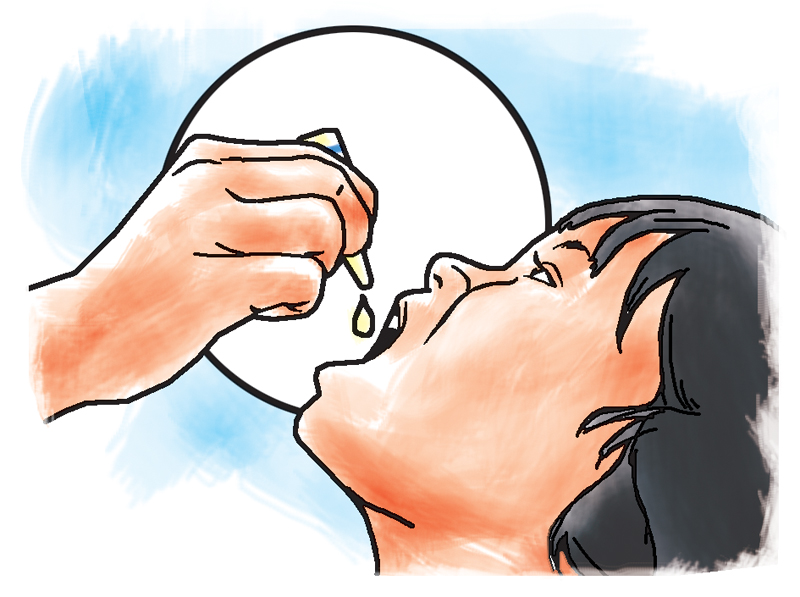MDGs and children: Way forward
With high number of parents migrating abroad for employment, a large number of children are institutionalized. Lack of proper monitoring mechanism by government system has increased in cases of child abuse
The Millennium Declaration and MDGs have set a new thinking in the development paradigm and guided the socio-economic development process in most developing countries. In the context of Nepal, amalgamation of the MDGs in development plans and effectual execution of the activities related to the MDGs have led to a significantly wider access of a large section of the population to education, health, drinking water and sanitation. The MDGs have also placed emphasis on shared responsibilities among developed and developing countries for global partnerships for reducing poverty and other socio-economic deprivations. As a result, financial and technical assistance to developing and least developed countries like Nepal have significantly increased.
This article aims to provide the achievements of MDGs in term of children, government’s efforts during the fifteen year commitment period for achievement of goals. The article further points out challenges faced during the process showing possible way forward towards creating a better future for children.
We find very encouraging signs as we review Nepal’s achievements of the goal. Overall children’s access to basic social services has expanded. Various statistics shows the absolute poverty level has come down to 23.5 per cent. Universal primary school enrolment has reached 95.3 per cent, basic education 87.5 per cent and secondary education 32.4 per cent. In terms of health, under-five child mortality came down to 55 per thousand births in 2011 compared to 118 in 1996. Maternal mortality has been reduced to 250 as compared to 539 earlier. All these statistics indicate momentous achievements in regard to children’s welfare.
Professor Bishwa Keshar Maskay in his paper Millennium Development Goals and Children: The Post 2015 Development Agenda provides plenty of examples where the government is determined to make the vision of MDGs a reality. Nepalese government has increasing interest on investment in child development and their empowerment, innovative policies and programs. He states health, education and well being in every aspect have been kept at the heart of the policies and programs by the government which indeed is appreciable.
Taking into consideration the importance of child development, the government has already revised and enacted the ‘National Child Policy 2012’ with the objectives of protecting children from physical and mental violence, ending discrimination, providing quality education and health, and strengthening juvenile justice system. A 10 year action program ensures allocation of at least 10 per cent budget to children both in the national and local level. This has been further supported through the national strategy and operational guideline on child friendly local governance in 2011 that advocates allocation of 15 per cent budget on children’s issue.
Ministry of Women Children and Social Welfare and the Ministry of Health have been doing their best to mobilize the resources they have. Central Child Welfare Board and District Child Welfare Boards in each district have been functioning in coordination with various stakeholders in grassroots as well as policy level. Immunization has been one of the key focus of the government with eradication of life taking disease like polio which resulted in high number of deaths of children in Nepal.
The major challenges facing issues of children at present are mostly related to broken families resulting in increasing number of children in child care homes. With high number of parents migrating abroad for employment, a large number of children are institutionalized. Lack of proper monitoring mechanism by government system has increased in cases of child abuse. Cases of abuse are often suffocated within the walls of such homes. The mismanagement and inability to alleviate street children from streets of urban areas of the country is also result of state failure. However, setting a goal to make Kathmandu valley ‘street children free’ by the end of this fiscal year can be considered as a ‘light at the end of a tunnel’.
Challenges in terms of protection of children, dropout in education, child marriage are some other very important challenges which government still needs to put a lot of effort on. Intra as well as inter country trafficking of children for child labor, selling of body organs and sexual exploitation still remains a big challenge. Although numerous policies and programs have been designed to cope up with the problem, implementation and monitoring aspect remain void.
Frequent monitoring and evaluation by the government would be the only way to ensure program and policy implementation. In order to ensure child protection, the government at first needs to work on improving employment opportunities within the nation.
With the new constitution and a new government, the post MDG should be more focused on policy reviews and research works in related issues. This would create space for data and statistics hence allowing organizations, donors as well as concerned government authorities to predict and analyze trends relating to children’s issues.






